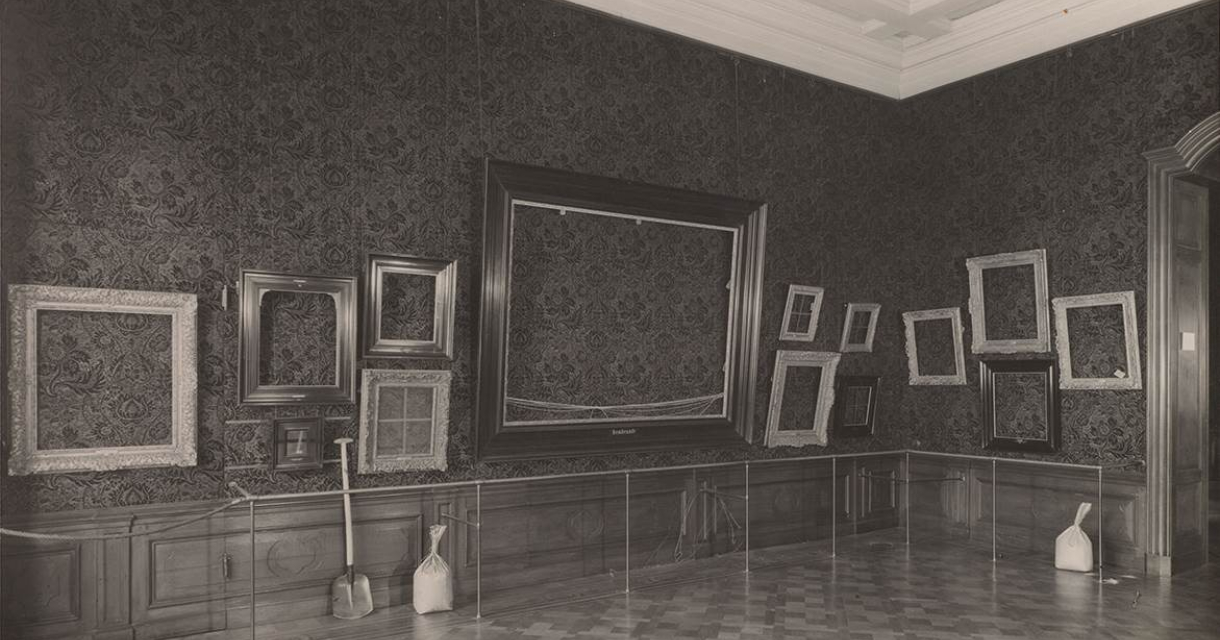House in the storm - Museum in wartime

In 2025, the Mauritshuis will commemorate the liberation of the Netherlands eighty years ago. The art collection in storage, propaganda exhibitions, musical performances and Arbeitseinsatz absconders - the Mauritshuis went through an eventful period during the German occupation of the Netherlands.
The museum was in the middle of the Nazis' political power centre: all major organisations of the German administration were literally around the corner. Director Wilhelm Martin had many concerns, including the protection of the world-famous collection of paintings, and how to deal with the propagandistic role of the museum envisaged by the Germans. In the basement lived Menno de Groot (1931) with his family. Menno's memories and experiences during the war are an important storyline for the exhibition House in the storm - Museum in wartime for our young museum visitors. They see through Menno's experience what went on inside the museum walls. This exhibition is made possible in part by the Johan Maurits Compagnie Foundation, Mondriaan Fund and Vfonds.
Personal stories
House in the Storm - Wartime Museum takes visitors back to the Mauritshuis in the period 1940-45 through paintings, objects, photographs, film and sound fragments. What historical events took place in and around the museum and what impact did they have on the visitors at the time and the people who worked and lived there? Based on personal stories, attention will be paid to themes such as (im)freedom, oppression, art protection and National Socialist cultural politics. A central place will be reserved for the story of the ‘Official of Administration’ Mense de Groot, the company manager who lived with his family in the basement of the museum from 1942 and where two of his children were born. His surviving logbook covers the main events of the time.
Empty frames
The Mauritshuis closed its doors on 25 August 1939 due to the threat of war and reopened again on 6 June 1940. Only a small number of paintings were on display. Director Martin realised back in the 1930s that ‘his’ collection would be extremely vulnerable in times of war and made every conceivable effort to get it safely through the war. The exhibition includes a film about Vermeer's Girl with a Pearl Earring's travels during the war. The Mauritshuis had a bombproof ‘art safe’. All the masterpieces were stored there at night and some were brought upstairs during the day, such as the Girl. Above the entrance, Martin had a text affixed: ‘t Is sad, that the war demands, that one hides the country's Art from view. In the course of the war, the most important works of art travelled to the various ‘Reichsbergplaatsen’. There they remained until the end of the war. During that period, the walls of the Mauritshuis offered a desolate sight: rooms with empty frames.
